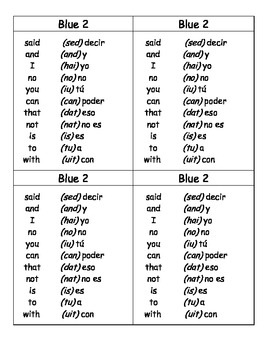
Two strong vowels together form two separate syllables:ģ. First, Spanish distinguishes between strong vowels ( a, e, o) and weak vowels ( i and u):Ģ. However, if there are two vowels next to each other, we have to consider some scenarios. When a consonant follows a vowel, it starts a new syllable:

Children simply rely on the help of clapping to divide the words instinctively, meanwhile older students seek to rely on rules.ġ. Interestingly, my experience as a Spanish teacher has shown me that breaking words into syllables seems to be easier for younger students than for teenagers or adults.
#ALL SPANISH WORDS WITH ACCENTS LIST HOW TO#
How to Separate Spanish Words into Syllables Luckily, Spanish is easier in that its word stress rules are very clear.īut before we jump into which syllables to stress, let’s quickly cover how to separate the syllables in a word. It’s meaning changes entirely-in fact it goes from being a noun to a verb and it means to estimate for the future or to cast something out, among other meanings. It’s a type of plan, perhaps for school or to achieve a business goal.īut if I say proj ect with the stress on the second syllable, what happens?

What’s the meaning of the word project, with the stress on the first syllable? In English, diacritics don’t exist to tell you which syllables are stressed-and the word stress does change the meaning! Word stress is a stronger, louder or longer pronunciation of a syllable in relation to other syllables in the same word. Let me go into detail, as it’s essential to understand the stress rules in Spanish to know when and how to use the acute accent. The acute accent in Spanish shows you which syllable in the word is stressed, specifically in cases where it’s marking an exception to normal Spanish stress rules. The acute accent in Spanish can appear above all five vowels: The acute accent in Spanish (´) is the most complex Spanish accent mark in terms of rules-and it’s also the most common one. Not many words use the diaeresis in Spanish, so here is a short list of words you may come across: SPANISH You can hear this distinction in words like pingüino (penguin) and bilingüe (bilingual). With the diaeresis present over the u, it no longer disappears into the following sound, but pronounces a sound of its own, similar to the English “w” sound. You can hear this in the words guitarra (guitar) and guerra (war). The combination gui or gue is pronounced as two separate sounds, where the letter u disappears into the sound of the letter that follows it: Here’s a concrete example: Without the Diaeresis The diaeresis appears above the letter u in Spanish to signal that it should be pronounced on its own as a single sound (called a phoneme). The diaeresis in Spanish looks like a German umlaut but it’s a different phonological phenomenon. Proper Spanish names use it (Toño) as well as Spanish countries (España!) and many other words, including: No rules exist to tell you where to put the tilde, in fact it’s just another Spanish letter. In the IPA (International Phonetic Alphabet) transcriptions, it’s written as /ɲ/. This letter is pronounced as an English /ny/. The Tildeįirst let me clarify that while this sign “~” is called “tilde” in English, I am referring to the Spanish ( la tilde) diacritic that appears as a wavy sign over the letter n: ñ. Only one of the Spanish accent marks requires a closer study of its specific rules. There are only three diacritics that you’ll need to master in Spanish and two of them you’ll learn in less than 5 minutes.
#ALL SPANISH WORDS WITH ACCENTS LIST PLUS#
Prime examples are resumé, naÏve, or façade.ġ0 types of diacritic marks exist in all world languages, but luckily, there are only three Spanish marks you’ll need to learn!Īnother plus is that Spanish accent use is not as complicated as other languages like French or Portuguese.

The only English words with accent marks are borrowed from other languages. They often change the tone, accent, stress, or meaning of a word. How can you find Spanish language accent marks on your keyboard?Īlong with a handy set of rules for using Spanish accent marks, I’ll also show you exactly how to produce accents with your computer for writing in Spanish! What Are Accent Marks?Īccent marks, officially named “diacritics,” are these funny-looking visual marks placed above, below, or next to a letter to indicate pronunciation characteristics.How many Spanish letters with accent marks are there?.In this blog post, you’ll find answers to the following questions You have names with accent marks, Spanish countries with accent marks, and words whose meaning changes simply due to an accent mark. In Spanish, accent marks are essential, and they’re all around. Jby Olga Put Spanish Grammar 0 comments How to Write and Pronounce Spanish Accent Marks


 0 kommentar(er)
0 kommentar(er)
